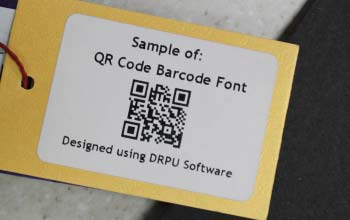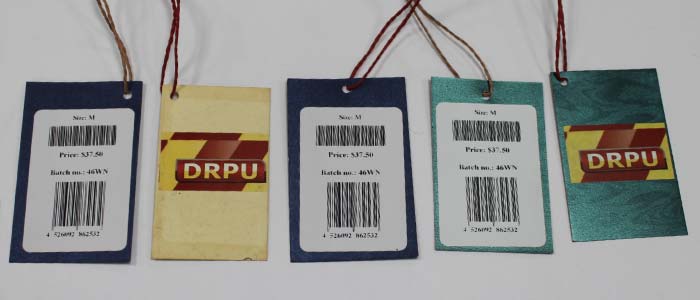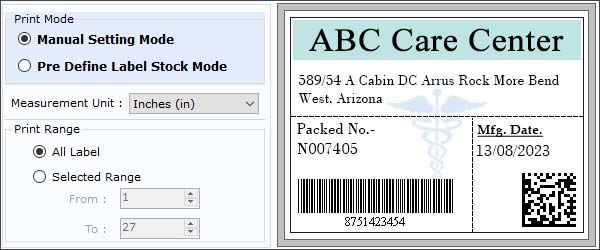Types of barcodes used in Healthcare Industry
The healthcare industry uses several types of barcodes to encode various types of information, including patient identification, medication management, and medical device tracking. Here are the most common types of barcodes used in healthcare and the information they contain:
-
GS1-128 and (NDC) barcodes:
GS1-128 barcodes are often used in hospitals to label patient specimens, such as blood or urine samples, for identification and tracking. This barcode system can encode more information than traditional barcodes, such as patient name, date of birth, and test type. ( National Drug Code) barcodes are used to identify prescription drugs and are required by the US FDA. They contain the drug's unique 10-digit NDC number, which includes the manufacturer code, product code, and package size.
-
Universal Product Code (UPC) barcodes:
UPC barcodes are used to identify medical products, including over-the-counter medications, medical devices, and supplies. They contain the manufacturer's code and the product code. The UPC barcode is a widely recognized and commonly used barcode format that is used across many industries, including the medical industry.UPC barcodes are sometimes used in the healthcare industry to track and manage medical supplies and equipment, such as gloves, masks, and other disposable items. Universal Product Code barcodes are used to identify and track medical products and devices, such as medications, surgical instruments, and medical supplies.
-
Code 128 barcodes:
Code 128 barcodes are commonly used for patient identification wristbands, medication labels, and laboratory specimens. They can encode alphanumeric characters, including patient information such as name, medical record number, and date of birth. This barcode system can encode more data than Code 39, making it useful for tracking larger or more complex items. Code 128 barcodes are used in the healthcare industry to label and track medical supplies, such as surgical instruments, bandages, and other equipment. This barcode can also be used to track patient information and medical records, making it easier for healthcare providers to access and update patient information.
-
QR codes:

QR codes are increasingly used in healthcare for a variety of purposes, including patient identification, medication management, and medical device tracking. They can encode a large amount of information, including text, URLs, and contact information. QR codes are often used in the healthcare industry to provide patients with additional information about their medication, treatment plan, or medical condition. For example, a QR code printed on a medication bottle could provide patients with instructions for how to take the medication, as well as any potential side effects to watch out for.
-
Data Matrix codes:
Data Matrix codes are similar to QR codes but are more compact and can be printed at a smaller size. They are used in healthcare for medication management, medical device tracking, and inventory management. This barcode system can store large amounts of data in a compact format, making it useful for tracking items with limited space for labeling. The GS1 DataMatrix is a high-density 2D barcode that is commonly used in the healthcare industry to encode information such as medication dosage, lot numbers, and expiration dates. This barcode is especially useful for tracking medications and ensuring that patients receive the correct dosage and type of medication.
Overall, the specific information encoded in a barcode will depend on the application and the specific requirements of the healthcare organization. However, in general, barcodes are used to help streamline processes, reduce errors, and improve patient safety in the healthcare industry.
Advantages and Disadvantages Of Healthcare Industry
Medical barcodes are an essential tool used in the healthcare industry to ensure patient safety and streamline medical processes. Here are some of the most common types of medical barcodes:
| Advantages: | Disadvantages: |
|---|---|
| Easy to print and read | Limited storage capacity |
| Cost-effective | Vulnerable to damage or wear and tear |
| Widely recognized and accepted | Requires line of sight scanning |
| Advantages: | Disadvantages: |
|---|---|
| Can encode a large amount of information | Require a specialized reader or app to decode |
| Can be scanned from any angle or orientation | May not be recognized by some barcode scanning systems |
| Can be customized with colors or logos | May not be suitable for small items or labels |
| Advantages: | Disadvantages: |
|---|---|
| Can encode a large amount of information in a small space | May not be recognized by some barcode scanning systems |
| Can be read using a standard barcode scanner | May be difficult to read if damaged or printed at a low resolution |
| Can be printed at a small size | May not be suitable for large items or labels |
Overall, the choice of barcode type will depend on the specific application and the information that needs to be encoded. It's important to consider factors such as storage capacity, ease of printing and reading, and compatibility with existing systems when selecting a barcode type.

Challenges Of Implementing Barcode Systems in Healthcare
Implementing barcode systems in healthcare can bring numerous benefits such as reducing medication errors, increasing patient safety, and improving workflow efficiency. However, there are also some challenges that healthcare organizations may face during the implementation process. Here are some of the challenges and ways to overcome them:
- Resistance to change: Healthcare professionals may be resistant to change, particularly if they have been using a manual system for a long time. To overcome this challenge, organizations should involve all stakeholders in the implementation process, provide training, and emphasize the benefits of the new system.
- Technical difficulties: Barcode systems rely on technology, and technical issues such as connectivity problems, scanner malfunctions, and software glitches can occur. To overcome this challenge, organizations should ensure that they have a technical support team in place to address issues quickly, conduct regular system maintenance, and train staff on how to troubleshoot common issues.
- Data quality: Barcode systems are only as good as the data they contain. If the data in the system is inaccurate or incomplete, it can lead to errors and reduce the system's effectiveness. To overcome this challenge, organizations should establish data quality control measures, such as data validation rules, data cleansing, and data entry guidelines.
- Integration with other systems: Barcode systems need to be integrated with other healthcare systems, such as electronic health records (EHRs) and pharmacy management systems, to ensure that data is accurately recorded and transmitted. To overcome this challenge, organizations should work with vendors to ensure that their barcode systems can be seamlessly integrated with other systems, and conduct thorough testing to identify and resolve integration issues.
- Cost: Implementing a barcode system can be costly, particularly for smaller healthcare organizations with limited budgets. To overcome this challenge, organizations should conduct a cost-benefit analysis to determine whether the benefits of the system outweigh the costs, and consider alternative funding sources such as grants and partnerships. Additionally, organizations can consider implementing the system in phases to spread out the cost over time.
By addressing these challenges, healthcare organizations can successfully implement barcode systems and reap the benefits of increased patient safety and improved workflow efficiency.
